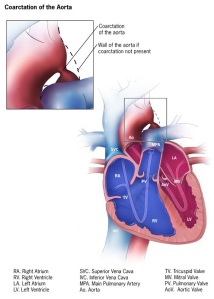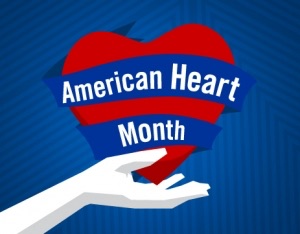On July 29, 1999 our grandson, Joshua Kisler was born to Martha and Scott Kisler. Within a few days his pediatrician discovered a heart murmur and before he was a week old he was in a pediatric cardiologist’s office in Tulsa, OK where an atrial septal defect (ASD) was diagnosed. ASDs are holes in the septum between the left and the right atria and are among the most common of congenital heart defects. Nevertheless, common or not, even with the assurance of the cardiologist that these holes often close on their own, his parents and his grandparents were very concerned. Surgery is necessary only if the hole is very large or does not close by age 3 or 4. Routine follow-ups were hardly routine, but indeed the hole did close and Joshua’s heart is healthy. WHEW!
Oakley Haddock, son of Trent and Chelsea Haddock was born on July 11, 2014. Shortly after his birth he was diagnosed with hypoplastic left heart syndrome (HLHS), a rare single ventricle defect. We attend church with one set of his grandparents as well as one of his aunts and uncles, so immediately his heart and his struggle became the focus of our prayers.
Hypoplastic left ventricle syndrome (HLHS) is a rare congenital defect of the heart that occurs in 1-3 of 10,000 births, but is the most prevalent of single ventricle defects. Between 1988 and 2005 there were 16, 781 cases identified in newborns. In spite of the low incidence, without intervention it accounts for 25%-40% of all neonatal cardiac deaths. (Rodriguez and Chang, J. of Ped, 2008) (Diggs et al, J. of Thoracic and Cardiov Surgery, 2010)

In requesting to write about Oakley here, I got this message from his grandmother, Joy Somero:
“A story about Oakley would be great. He will have his seven month birthday on the 11th….Wednesday.
He continues to thrive. His Vanderbilt appointments are farther and farther apart. His medication has been cut back and he is the happiest baby that you will ever see.
He has a beautiful smile . . .and is always ready to share it. He doesn’t know he is different and I can tearfully say that he has made this whole experience look easy. They told us that he went to sleep smiling for his second surgery.
He will have to have three surgeries for the best case scenario. The first is within days of birth if the baby is strong enough. The second is at about four months old. The third surgery is usually at three year old. That is because they outgrow the shunt and it will be replaced with a bigger one that they are not supposed to outgrow.”
Joshua and Oakley were born more than a decade apart, in two different centuries, in two different states with congenital heart defects a whole spectrum apart. Both were diagnosed early by talented pediatric cardiologists and in Oakley’s case a team including cardiovascular surgeons and others. BUT you know what, no defect in a newborn is minor to the parents and extended family of that baby. Even with emotional and spiritual support, the wear and tear on the physical body, the effects on the siblings of the sick child, the financial burden takes a toll. Whether it is only routine visits with echocardiograms every 6 months like with Josh or multiple hospitalizations and surgeries like with Oakley, the journey can be exhausting.
Oakley has had two surgeries so far and numerous extended visits at Monroe Carell Jr. Children’s Hospital Vanderbilt. As his grandmother reported at least one more surgery will be required.Joshua is a healthy 15 year old with all his cardiology visits in his past. He plays baseball and sax in the Morrison High School band. He is a very energetic witty boy.
I would ask that those of you who pray, please pray for a healthy outcome for Oakley, for his parents, sisters and his extended family and for every child born with a congenital heart defect.
For more information about Congenital Heart Defects, may I suggest the following websites:
Children’s Heart Foundation
http://www.childrensheartfoundation.org
American Heart Association








